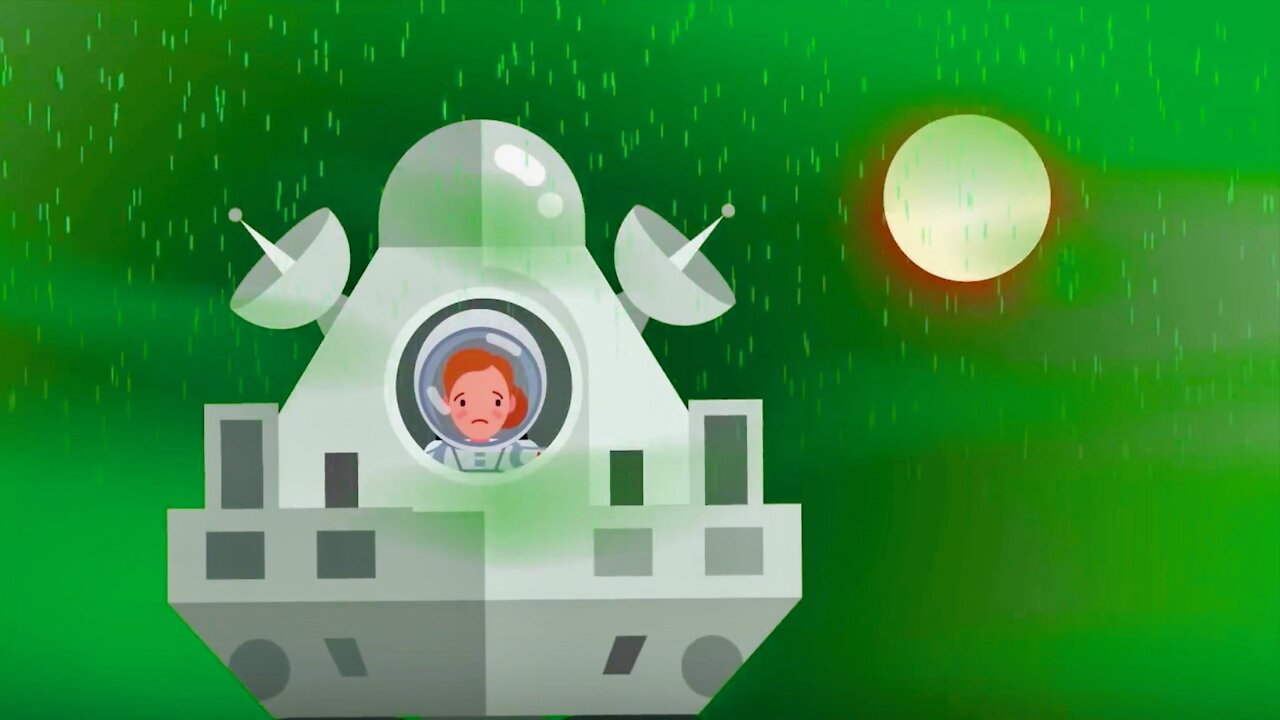Premium Only Content

Why NASA Can't Land Astronauts On Venus - Human Death Trap
Should We Send Men to Venus Instead of Mars? When it comes to manned spaceflight, a manned mission to Mars has been the ultimate goal since the 1960s; after the Moon, it's the most logical place to go. But what about Venus? We can't land on the surface of Venus. At least, it would be almost impossibly difficult to design a spacecraft that could survive the planet's hellish environment. With a carbon dioxide rich atmosphere at a pressure about 92 times what we feel on Earth and an average surface temperatures upwards of 900 degrees Fahrenheit, it's not a welcoming environment. But about 31 miles above the surface, Venus becomes almost Earth-like. Above most of the clouds there's enough sunlight to provide solar power, the temperature is colder but still warm enough for liquid water to exist, and the gravity is about 90 percent of what we feel on the Earth. The gases at that altitude can also support life, albeit with a little help. There's more than enough carbon dioxide for plant growth. The nitrogen in the atmosphere along with hydrogen gathered from floating sulfuric acid droplets could be turned into the necessary elements to support human life.
So why not build a floating city? Or explore the planet with a dirigible feature a manned cabin slung underneath? It's something scientists at NASA's Langley Research Center recently proposed, and it's a compelling idea.
NASA, SpaceX, Mars One… all (and others) are actively working on plans to send humans to the surface of Mars at some time within the next few decades. And while the first human exploration of the Red Planet will be a truly momentous and historic event in whatever fashion it ends up being – it will involve the first steps people make on another planet – getting humans safely to the surface of Mars and back will certainly not be a simple task… we still have yet to venture farther than our own Moon, after all.
To help develop the technologies needed and work out the logistics of traveling to Mars, NASA is proposing an Asteroid Redirect Mission (ARM) that would be sort of a “midpoint” in human spaceflight beyond Earth. The exact details of ARM won’t be nailed down until next year (2015) but in essence it will involve getting a small asteroid or a piece thereof into orbit around the Moon, where it can be examined and sampled by astronauts. But while ARM will certainly assist in practicing for advanced deep space missions, some NASA engineers are suggesting that we could do better, actually putting humans if not on at least above another planet with airships soaring the skies of Venus.
Scientists from NASA Langley Research Center in Hampton, VA want to get a better idea about conditions on our nearest planetary neighbor Venus, so they have come up with HAVOC – High Altitude Venus Operational Concept, a lighter-than-air vehicle that would send two astronauts on a 30-day mission to explore the planet’s dense, corrosive atmosphere.
The size of the airship is based on having enough lifting gas (e.g., helium) to support the weight of the astronauts’ habitat and ascent vehicle in Venus’ thick atmosphere. Once the airship reached a target altitude of 50 km (31 miles) it would be able to keep itself aloft without the need of propellers or jets.
At such an altitude Venus would be much more hospitable for humans than ground level on Mars. Evan Ackerman writes in an article for IEEE Spectrum: At 50 kilometers above its surface, Venus offers one atmosphere of pressure and only slightly lower gravity than Earth. Mars, in comparison, has a “sea level” atmospheric pressure of less than a hundredth of Earth’s, and gravity just over a third Earth normal. The temperature at 50 km on Venus is around 75 °C, which is a mere 17 degrees hotter than the highest temperature recorded on Earth. It averages -63 °C on Mars, and while neither extreme would be pleasant for an unprotected human, both are manageable.
In addition Venus offers much more protection from solar radiation than Mars. Even in its upper atmosphere, the levels of radiation received by a human would be “about the same as if you were in Canada,” according to Dale Arney from the Space Mission Analysis Branch at NASA Langley. But the solar energy available would be much more than Mars – 240 percent more, in fact.
Will humans one day be living in "cloud cities" above Venus?
Humans could one day be living in “cloud cities” above Venus.
Music: Svad 2 by Dhruva Aliman
Amazon- https://amzn.to/2MbZ3TF
https://music.apple.com/us/artist/dhruva-aliman/363563637
https://dhruvaaliman.bandcamp.com/album/snooper
http://www.dhruvaaliman.com/
Spotify - https://open.spotify.com/artist/5XiFCr9iBKE6Cupltgnlet
#space
#astronomy
#venus
-
 52:31
52:31
Seeker Land
18 days agoMystery of the 3,000 Year Old Girl from Egtved Denmark - Life in the Bronze Age
166 -
 0:37
0:37
Nilakshi
3 years agoVenus Flying trap
27 -
 0:35
0:35
MultidimensionalOcean
3 years agothe human trap
37 -
 LIVE
LIVE
Quite Frankly
7 hours ago"Fahrenheit 2025: Drone Hysteria, The Fog, Smart L.A." ft. Elana Freeland 1/15/25
1,327 watching -
 1:43:00
1:43:00
Redacted News
6 hours agoBREAKING! CAPITOL POLICE ON HIGH ALERT OVER ATTEMPTS AGAINST TRUMP, MEDIA SILENT | Redacted
141K224 -
 51:09
51:09
Candace Show Podcast
5 hours agoHILARIOUS! TikTok Ban Backfires | Candace Ep 133
107K114 -
 LIVE
LIVE
Dr Disrespect
9 hours ago🔴LIVE - DR DISRESPECT - WARZONE - NO MERCY
2,452 watching -
 2:27:54
2:27:54
Mally_Mouse
3 hours agoLet's Hang!! -- P.O.Box opening! & Stardew Valley pt. 20!
27.6K2 -
 1:17:31
1:17:31
The Amber May Show
5 hours ago $1.01 earnedDeep Dive On The California Fires | Gulf of 'Merica | Alan Sanders
20.6K3 -
 5:32
5:32
Rethinking the Dollar
9 hours agoHolding 0.001 Bitcoin Could Make You a Millionaire – Here’s Why You’re the Elite
26K8